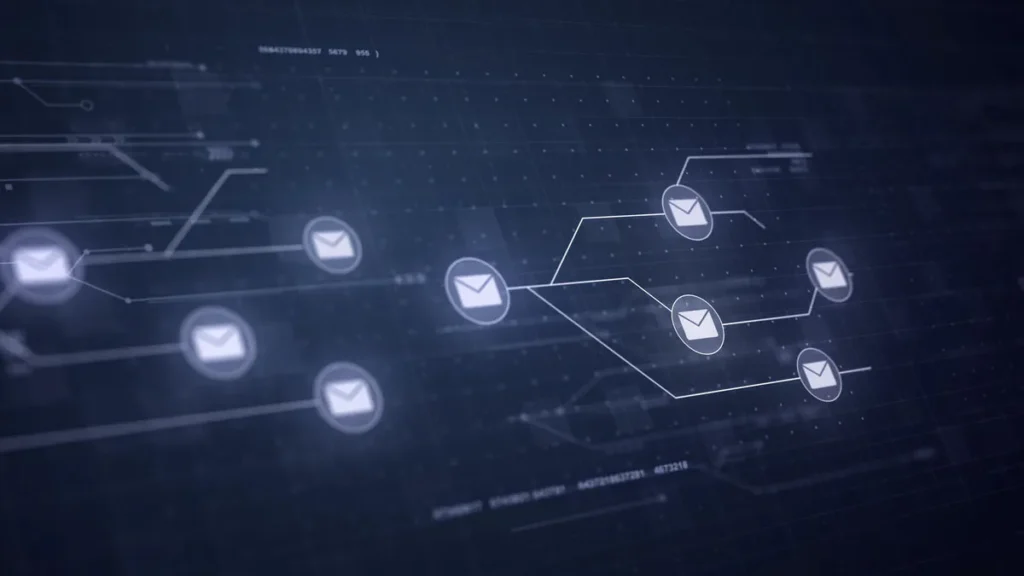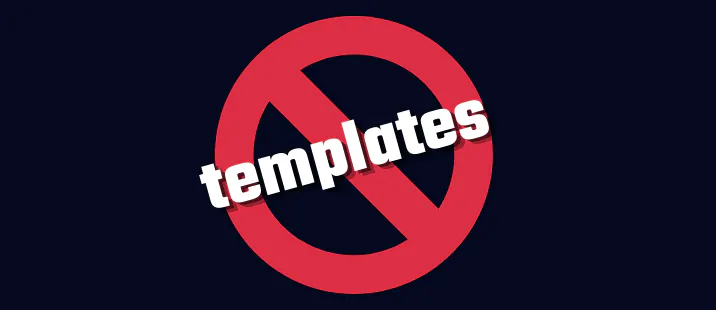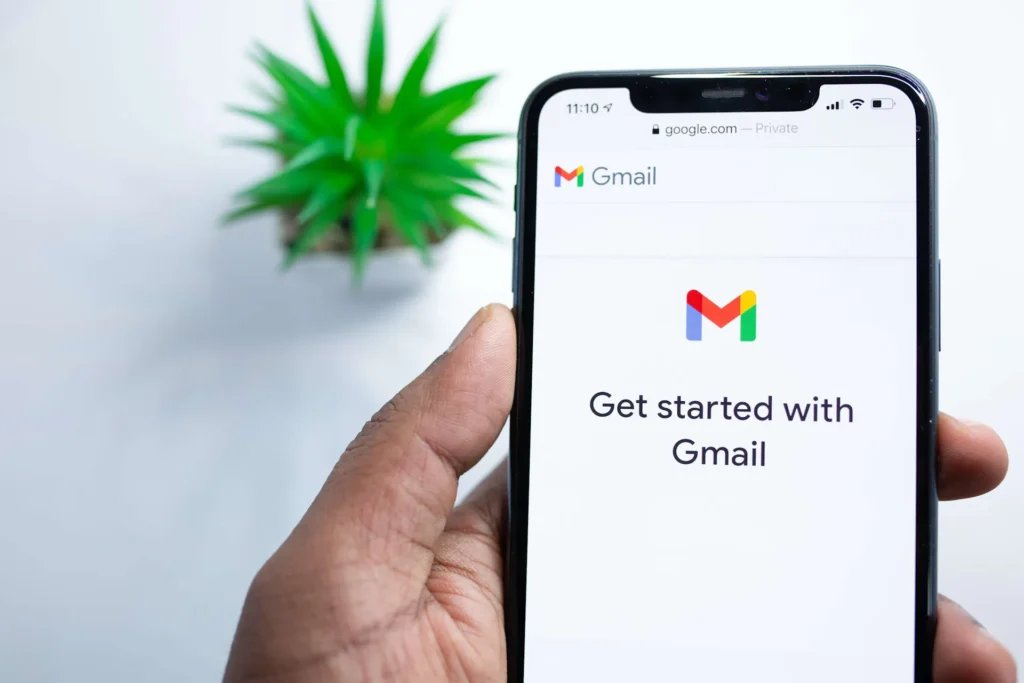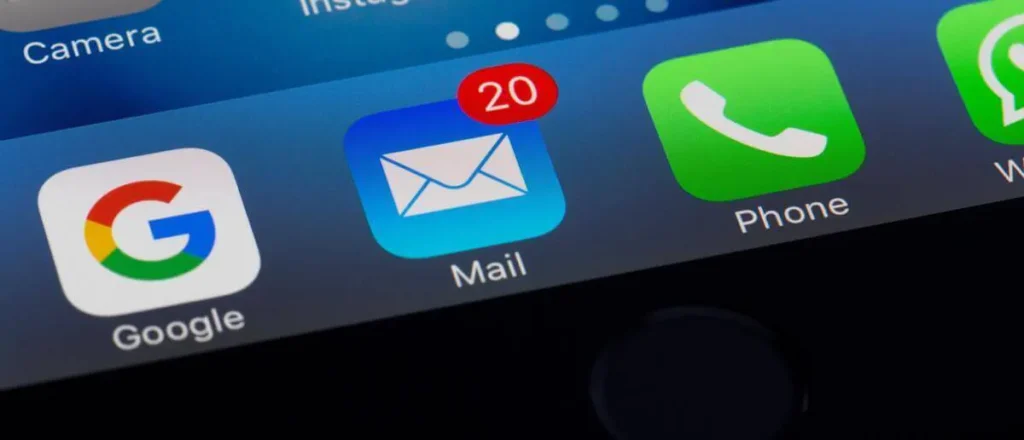Cold Email Outreach Best Practices
What is Email Outreach and Why is it Important?
Cold emailing proves to be the most effective and efficient means of obtaining new leads for your business. In recent years, many marketers use it as their first and main marketing strategy, as it can reach many people at once.
It has even surpassed social media marketing by a 20% difference. Even though using social media to create a campaign can be useful, it is now proven that sending cold emails are easier for reaching people that have never showed an interest in your product or service before.
As we have looked at the differences between a cold call and cold email in our other blog post, and concluded that making a phone call falls short in many different aspects when compared to email marketing, it is evident to see that sending cold emails are the best way to use when it comes to creating a bond with the prospects and creating a successful campaign in and out.
One pain point of choosing the right type of strategy to use as a marketer is to find the least costly way of finding a way to let your prospect know about your company or your product. And unfortunately, social media marketing or cold calling are not good ways to deal with the costliness problem. In fact they do not bring any types of solutions to it as you will need to hire more people to your sales teams and that will be even more costly.
This is when cold emails come in to play and solve this pain point by being a super scalable tool that helps you sent many emails at once with the right tools, and shows how important it is to make the right choices for your company and create the most productive ways. Cold email campaigns can be very useful in every way for generating more with less people in your sales team.
There are many other upsides to cold emails but, first, let’s understand what is a cold email before we get into how to solve those problems. In this section, I will be discussing the importance of email outreach, what it is and how it can be used as part of an effective strategy.
What is a cold email outreach?
A cold email essentially means sending an email to someone you don’t know yet. It is at its core, sending a message to a potential customer with no previous engagement between you two to get their attention and let them know about your company or brand.
A cold email campaign can be as simple as sending an email to a list of target prospects or people who fit your target audience criteria, or as complex as creating a funnel and nurturing the leads obtained from cold emails.
With using the method of follow up emails and creating a cold email sequence, you can stay in touch with your prospects and establish a connection with them.
Why is cold email outreach important?
Cold email outreach is an important tool used by marketers for businesses of all sizes and it is considered to be the best cold outreach tool out there. It allows companies to reach out to prospects, build relationships, and introduce their products and services. It enables businesses to connect with people who may not have been aware of their products or services.
The ability to communicate directly with potential customers via email gives businesses the opportunity to create a more personalized approach, build trust, and drive conversions. Cold email is a great way to find new leads and increase brand awareness without having to invest a lot of money in traditional marketing strategies.
Cold emailing has proved itself to be the most scalable way for marketing. To lead a successful cold outreach strategy it is essential to write an email to the right person or find tools that can do it for you.
How to Write Cold Emails That Convert

What is a conversion rate?
Email conversion rate, or email marketing conversion rate, is defined as: the percentage of prospects who complete a goal action. Of course, that action depends on your specific conversion goal. In many instances, the conversion goal is purchase-related (becoming a customer), while other times it’s not (simply becoming a lead).
Email Marketing Conversion Rate is the percentage of subscribers that complete an email CTA (call-to-action). It is an ROI (return on investment) measurement, and is therefore considered an important metric. Since many conversions are sales-based, the email marketing conversion rate is an indicator of the financial success of an email campaign.
How do you measure conversion rates?
In its very basic form, take the number of conversions and divide that number on total interactions.
Let’s say you’ve sent 1000 emails and only 50 of them were converted (or completed the action you asked them to do). 50/100 = 0.05. Your conversion rate is 5 per cent.
Why do you need to make sure your email is converting well?
Knowing if your emails are converting well is important in order to understand how effective your marketing campaigns are. One way to determine how well your emails are converting is to track statistics such as the number of opens, clicks, and conversions.
Additionally, you can use A/B testing to experiment with different subject lines, content, and calls-to-action to see which perform better.
Finally, it’s important to monitor user feedback in order to notice any trends in customer opinion and make adjustments accordingly.
In short, it is essential to write emails that convert so that your marketing strategy can be more effective.
How do you know if your emails are converting well?
Email conversion success can be measured in a variety of ways, depending on the goal of the email. For example, if the goal of the email is to get people to sign up for a newsletter, then a good measure of conversion would be the number of people who actually sign up. If the goal of the email is to get people to purchase a product, then a good measure of conversion would be the number of people who click through and make a purchase.
Tracking metrics such as open rate and click-through rate can also be effective indicators of email performance and help determine whether an email is converting well or not. If these metrics are high, it is likely that your emails are achieving the desired results.
Email Outreach Best Practices That Will Help You Get a High Response Rates

Email outreach is one of the best ways to reach out to potential clients. In this section, we will talk about how you can write an effective cold email and what are the practices that will help you get a great response rate.
We all know that there are certain things that make an email more likely to get a response. For example, if your email has a subject line that is compelling enough or if it’s short, concise and well-written. But what are some other practices for getting a great response rate?
In this section, we will talk about some of the most effective ways to increase your response rate from emails.
Decide On Your Why
Writing a cold email is an important communication tool, but it is often overlooked in terms of how much thought and preparation should go into it. Before you start typing out your message, it is important to decide on your purpose for writing the cold email. If you can reach your target audience the value of your comnapy will increase as it will have converted more people from prospects into real customers.
Doing so will help ensure that your message is clear, concise and effective. It ensures that you are using the right tone and language for your intended prospects. It can also help you avoid common pitfalls such as writing too much, not addressing the intended recipient, or forgetting to include important information. It is always a good idea to keep it short and be exact to the point in a polite way.
When deciding on your reason for writing a cold email, it is essential to consider your prospect. Who are you writing to and what do they need to know? Taking the time to think through your purpose will help you craft an email that is both meaningful and relevant to the prospect.
Additionally, deciding on your purpose will help you to stay focused and organized as you write. You will have a better understanding of what needs to be included in the email, and what does not. With a clear purpose in mind, you will be able to craft a message that is more likely to get the response you desire.

Add Value by Hitting a Pain Point
If you want to add value in an email to a prospect, the best way to do this is by hitting on their pain points. This means understanding what their challenges and struggles are and then showing them how your product or service can help with those issues. To do this, you need to know what their needs are, what their goals are, and what they are looking for.
Start by doing research on the prospect and their business, so you can understand what challenges and issues they are facing. Then, craft emails that directly address those issues and provide suggestions and solutions to their pain point.
For example, if the prospect is looking for ways to increase sales, suggest a new marketing strategy (like sending cold emails!) or product offering that could help them achieve their goals (such as Nureply doing it already for you). Show that you understand their pain points and have solutions to offer. By doing this, you will demonstrate your understanding of their needs and add real value to your email.
Once you have that information, you can tailor your email to meet their needs and show them how you can help them reach their goals. Use clear and concise language, and provide detailed examples of how you can add value to their life.
Demonstrate the value you can provide and make sure your prospect knows how you can help them. By taking the time to understand and address the needs of your prospects, you’ll be able to add real value in your emails and build strong relationships with potential customers.
Ignite Interest
When sending a cold email to a prospect, you want to create an impact and ignite their interest. To do this, you need to make sure that your email stands out from all the other emails in their inbox. This means having a compelling subject line, an engaging opening sentence, and an eye-catching closing wishes.
Make sure to explain how you can help meet their needs or solve their problems. Make sure to explain what you are offering will be valuable to them and focus on the benefits they will receive. If possible, include a link to a success story or testimonial to give your prospect an idea of what they can expect.
You also need to make sure you’re providing the prospect with relevant information. Explain why you’re reaching out, what you can offer them, and any potential benefits.
When you contact the right person who might be interested in what you would be able to offer them, you will be have done half of the work. To ignite interest in your prospects the first thing to do is to get contact information.
Finally, keep your message short and to the point. Too much information can be overwhelming, and you don’t want to lose their interest before they’ve had a chance to read your entire cold email. With these tips in mind, you should be able to craft a cold email that will pique your prospect’s interest and get them interested in learning more about your product or service.
Don’t just try to sell your product by try to make sure that you make your prospect is interested in them by providing value on their side and it will be of great help for your cold email campaign. They must be already done with hundreds of advertisements that end up in their email inbox. They probably don’t need more from you.
Do Not Use a Cold Email Template
When it comes to email marketing, cold emails are a popular way to reach prospects. However, it’s important to remember that cold emails should never be sent using a cold email template. Cold email templates are impersonal and often come across as generic and unprofessional. Using a cold email template can also make it difficult to personalize emails for different prospects, as each person’s needs and interests vary. It can also be difficult to track the effectiveness of your emails when using templates, as the results will be limited.
A better approach is to craft each email from scratch, using language that speaks directly to the recipient. This allows you to create genuine connections with your customers and build trust. It also gives you the chance to track the effectiveness of each email, so you can make adjustments based on the results. So if you’re looking to make the most of your cold email campaigns, it’s best to avoid cold email templates and craft each message individually.
Basically, cold email templates are not as effective as you think. The time you want to save when writing a cold email template might get back to you in the worst way possible. Keep in mind that you want to make the best of that short, a-few-sentences email. Not putting all your effort into it will not help you when creating an effective cold email.
From your subject line to your closing words, you must use email personalization in order to reach high conversion rates from your cold email campaign.
Cold email templates will limit your email. Blindly following cold email templates will decrease the quality of your cold emails and will be lost amongst the many others. Being creative is important here rather than using preset cold email templates because your number one aim is to get your cold email read.

Do Not Sound as If You Are a Template
I doesn’t end at not finding a cold email template online to use it, you also shouldn’t sound like a cold email template.
Sounding like a cold email template basically means that you are writing a cold email in such a way that it feels to blunt, almost robotic. Being a little formal in your cold email is fine as long as you are writing to someone in a governmental position but other than that we believe that writing your cold emails more personalized and less formal will be a plus in the long run.
Remember that you are trying to build a long-term connection with your prospects and in order to do that you want to feel more sincere to them. You can be one of the hundreds of people in your prospect’s email inbox or you can stand out with your cold emails.
Don’t Use Too Many Links in Your Emails
It’s important to be aware of how the use of links in your emails can impact the effectiveness of your messages. Too many links can be confusing to your prospects, as they may not be sure which link they should click on or what action they should take. This can lead to them not taking any action at all, which means you won’t be able to achieve your desired result.
To avoid this, it’s best to limit the number of links in your emails to one or two at most. If you need to include multiple links, try to group them together in one sentence or paragraph. Additionally, make sure the link text is relevant to the message and action you want the reader to take. By doing this, you’ll be able to ensure that your emails are clear and easy to understand, which will help you get the results you’re looking for.
Send Personalized Cold Emails
Personalized emails have the potential to increase email conversion rates. They are also a great way to show that you care about your customers and their needs.
There are multiple ways to personalize emails, but the most popular are through the use of customer data and content personalization. Customer data includes things like customer name, company name, industry, etc. Content personalization refers to using specific content for each individual in an email campaign.
For example: if you are sending a new product release email and a potential customer may show interest in that product according to their personal data, then you should include more information about it in their email.
It should also include cold email subject lines that are presonalized according to your preopects. There are more tips to follow and you can find how to write a personazlied emails here.

Let Them Choose Their Way of Resonding
In your cold email strategy, it is not only polite, but also a good idea to let your prospect choose their own way of responding to you. You can simply say that you are waiting for a reply to that email or if they would prefer a call or even better, would rather arrange a meeting, you can let them know about that too.
Let them choose their own way to contat you. It will give them a freedom from the annoying advertisements might push them to do something.
When your call to action sounds more understanding of their time or their preferences rather than a simple “sign up” button and nothing more, your prospects will be more inclined to interact with your email and you will increase your response rates.
Send Follow Ups
One of the greatest sides of cold emailing is the ability to send follow ups without being too pushy. We have a whole other blog post on how to send follow up cold emails that I advise you to check out to understand on a deeper level.
To make it short, sending follow ups will be amazing for your cold email campaign, if they are written in the right way and sent to the right person.
How to Structure Your Emails for Maximum Effectiveness

Email is an important tool for businesses, and it is important to know how to make the most of this tool.
There are many factors that affect the effectiveness of your emails, and it’s important to take them into consideration.
The structure of your email can greatly influence how well it performs as it will be the message that is interacting with your prospect. In this part of my blog post I will be focusing on the best tips to writing cold emails that convert to a response or sales.
The following are some guidelines on how to best structure your emails for maximum effectiveness:
How to Write an Effective Cold Email Subject Line
An effective email subject line is one that captures the reader’s attention and compels them to open the email. So what are some useful practices for writing subject lines for emails?
A good subject line should be short, sweet, and to-the-point. It should also be relevant and personalized to the recipient.
Here are some ideas for cold email subject lines to make you understand how a subject line works in a cold email and to get you started in general.
Make sure that you have included your prospect’s first name in the subject line as it will definitely take their attention seeing their name written as the first thing after your name or your company name.
It is scientifically proven that including the first name of the prospects in your subject lines increases the open rates by up to 20 per cent. It is no joke, it helps your cold email strategy immensely to include first name.
Your subject line shouldn’t be longer than ten words maximum. In today’s world we have an incredibly reduced attention span and if your email doesn’t get opened, it will not have reached its purpose.
One of the ways to increase your open rates is to make your subject line an appropriate length for people to read. If your subject line is only two words, it won’t take enough attention and if it is too long it simply won’t be read, or worse, it will be sent to the spam folder.
How to Write an Effective Body of the Email
Here we have listed some tips and tricks for writing compelling copy in your cold email:
The body of the email is where the email becomes most personal. Most people might think that the first paragraph of the email should be used to introduce yourself and your company, and then you can start to ask questions about their business.
However, we do not believe that is a good point to make as it might steal away some effectiveness from your email, which you should be planning to keep it short at this point and every single word you use is important.
It is a good idea to practice personalization in your cold email from head to toe. Your email body with its entirity should include your name, the subject line, greeting, first line, adding value, call to action, and closing.
In order to practice perfect personalization, include your prospects’ first name in the greeting. It feels more sincere to use the first name rather their last name, and unless you are reaching out to someone on a more formal level, such as emailing your professor, it is always a good idea to cold email your prospect using their first name.
The first paragraph, or the first line, should be about them. We can generate first line bulks for your email personalization and help you achive success in your business.
The second paragraph should be about why you are contacting them, what you would like from them, and what they will get in return for responding.
The third paragraph should tell them how they can contact you back in their own way, as we have talked about above, and that you are waiting for their reply.
Include a personal touch by using good wishes at the end of the email. Though, there are many different ways for ending a cold email.

Conclusion: The Importance of Email Outreach in Your Marketing Strategy
Email outreach is an important part of any marketing strategy. It is one of the most effective ways to reach out to potential leads and customers.
Email outreach can be done in many different ways, but it is always important to make the email compelling and provide value to the recipient.
Cold email is an important part of any marketing strategy. It allows you to reach out to prospects who may have otherwise gone unnoticed, giving you the opportunity to introduce them to your business.
By using targeted cold emails, you can tailor your message to the specific needs and interests of your recipients, making them more likely to engage with your brand.
In addition, cold email is relatively inexpensive, so it can be a great way to get your message out to a large audience without breaking the bank.
Finally, it gives you the opportunity to track the success of your campaigns, allowing you to make adjustments and optimize your outreach efforts in the future. Cold email can be an invaluable tool in your marketing strategy, so consider adding it to your repertoire today.
We can help you with creating amazing content for your emails. You can sign up here today!


